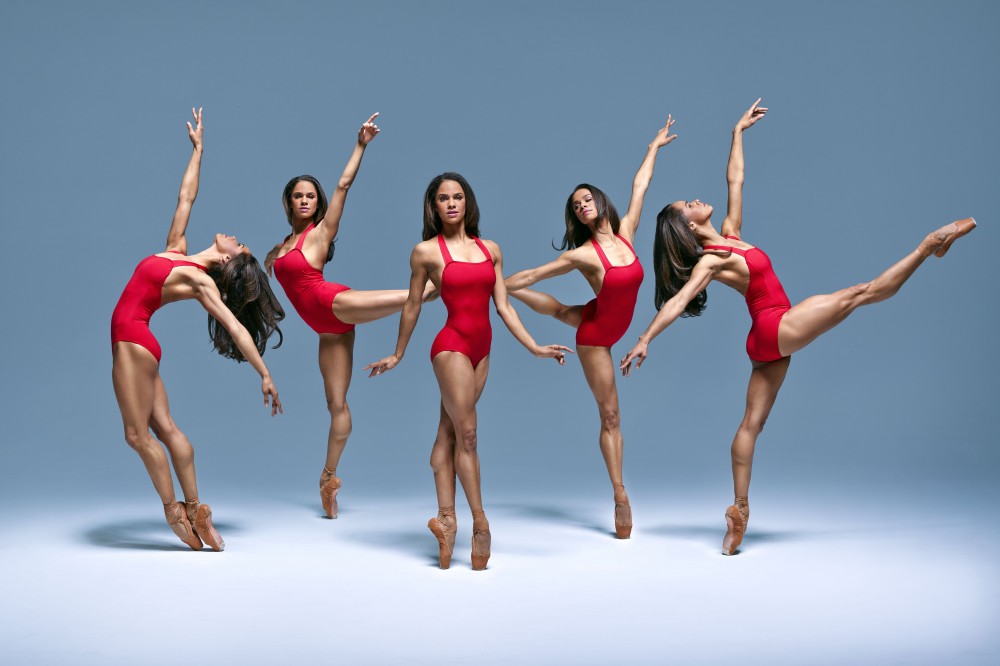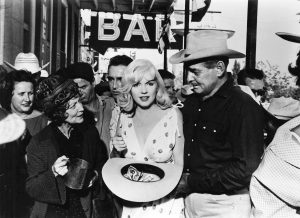In 2007, Misty Danielle Copeland became the first African-American ballerina to be a principal dancer with the American Ballet Theater (ABT) in twenty years. Since then, Misty Copeland has become a recognized icon for breaking down barriers in the art of dance. All her determination and resilience was built on the work of her mentor, Raven Wilkinson. Wilkinson was an African-American ballerina performing in the early days of the Civil Rights Movement. “She’s been through so much more than I could ever imagine, in the 1950s and experiencing racism in that time. It just felt like, ‘I can do this,'” Copeland expressed.1 Misty Copeland knew racism was not going to stop her from chasing her dreams.
As a young child, Misty Copeland expressed herself in the form of dance and instantly fell in love with the art. With her family’s hardship, dance was her escape and all her worries went away. Some of these worries included a lack of finances, a lack of comfortable living conditions, and a mother constantly changing boyfriends.2 Dance offered Copeland a way to relax and forget about all her problems. A prodigy by the age of thirteen, she surpassed the other dancers even with the many years they had ahead of her.
Once her training became more intense, Copeland began competing and receiving scholarships. At age fifteen, she was accepted with a full scholarship to the San Francisco Ballet’s Intensive Summer Program. In 2000, Copeland was also named the ABT’s Coca-Cola Scholar. After the program, the ABT invited Copeland to be part of their own studio company. She was the only African-American woman out of eighty dancers, an impressive feat since she was often challenged by her race and physique.3 “I had been told to pancake my skin a lighter color to fit in with the rest of the company,” she wrote.4 Nonetheless, she rose up with her extraordinary skill, and the lack of racial diversity came to the forefront, beginning to make waves in the ballet world.

Stephanie Webre challenged the status quo by casting two African Americans to play the leading roles in Swan Lake: Brooklyn Mack and Misty Copeland. Copeland and Mack were exquisite for their dancing. However, their performance was also admired for Webre’s ethnic inclusiveness, because dancers of color rarely get the chance for leading roles. According to Karen Sparks: “Many companies and schools endorse retrograde aesthetic values that place dancers of color at a disadvantage in the realms of hiring, castings, and promotions.”5 This discouraged African-American dancers from continuing on and studying ballet. For these reasons, there have been insufficient breaks for dancers of color.
After two decades, Misty Copeland became the first African-American soloist dancer to perform for ABT. Her story quickly made her a role model. “It made me feel really empowered not to let the negativity of racism even to this day affect me and my career. I can be strong and persevere and allow my talent to shine beyond the color of my skin,” she wrote.6 Misty Copeland became an advocate for “diversifying the field of ballet and creating access for dancers of varying racial and economic backgrounds.”5
Since receiving a leading role, Copeland has served on the advisory committee for the ABT’s Project Plié, which is a program “to increase racial and ethnic representation in ballet that offers guidance to dance instructors in diverse communities around the United States.”8 Project Plié’s objective is to discover the next “Misty Copeland” and invest in his or her training. The program is made up of a combination of corporations within the dance community to provide scholarships and many opportunities for dancers of color. Project Plié offers internships to encourage many dancers of various backgrounds to pursue their dreams of becoming professional ballerinas. In order to obtain a scholarship or internship, the student must attend many auditions and attract the attention of the advisory committee. Once selected, Project Plié interns are eligible to receive a scholarship to live during their time in New York City. The scholarship consists of roundtrip transportation, a metro card, and housing assistance. This organization could not be what it is today without Misty Copeland’s determination. She continues to advocate for dancers of color and dancers of unprivileged backgrounds to pursue their dreams of becoming a dancer. Today, several ballet companies have made progress in changing racial inequality in ballet. Just within the last decade, many companies have recruited dancers and have begun to change the complexion on the stage. Misty Danielle Copeland is breaking the racial barriers and paving the way for future ballerinas.9

- Encyclopedia Britannica, December 2014, s.v. “Misty Copeland,” by Naomi Blumberg. ↵
- Misty Copeland, Life in Motion: An Unlikely Ballerina (New York: Aladdin, 2014), 20. ↵
- Encyclopedia Britannica, December 2014, s.v. “Misty Copeland,” by Naomi Blumberg. ↵
- Misty Copeland, Life in Motion: An Unlikely Ballerina (New York: Aladdin 2014), 20. ↵
- Encyclopedia Britannica, June 2015, s.v. “Addressing Racial Diversity in Ballet,” by Karen Sparks. ↵
- Misty Copeland, Life in Motion: An Unlikely Ballerina (New York: Aladdin 2014), 127. ↵
- Encyclopedia Britannica, June 2015, s.v. “Addressing Racial Diversity in Ballet,” by Karen Sparks. ↵
- Encyclopedia Britannica, June 2015, s.v. “Addressing Racial Diversity in Ballet,” by Karen Sparks. ↵
- Rhonesha Byng, “Misty Copeland Inspires Project Plie, A Diversity Initiative Launched By ABT To Fine More Black Ballerinas,” Huffpost, September 2013, https://www.huffingtonpost.com/2013/09/19/misty-copeland-project-plie-_n_3950827.html. ↵



60 comments
Emily Velazquez
What Copeland did was truly extraordinary. She paved a way for all future African- American ballerinas. The program she created, Project Plié, is continuing to make progress in changing racial inequality in ballet. I like how the program also encourages all minorities to participate and is creating a way for not just African Americans. This true story was interesting and exciting to read about.
Diamond Davidson
When I first heard about her and what she did, I was extremely impress. I want to dance, but more of classic and hip hop. However, I still want to practice my ballerina techniques because I feel like I can call myself a true dancer when I learn technique. I don’t think I’m a real dance because I know how to dance, I think I’m a real dancer when I do more than just my classical dance. This is just me, but I really love what she did to get where she is now; it’s truly amazing. I really love this article, it flows perfectly and gets your point across. Also, the picture you used are really good as well.
Claudia Sanchez
An easy article read and the story naturally flows! The article is on a topic I was not even aware of but am glad it is being brought to light in this article. It truly is wrong for there to be only one predominant race in any kind of activity and ballet is another example of an activity that needs to diversify. I’m glad, however, that great efforts are being made to encourage people of color to enter these fields.
Maya Mani
Can’t believe that race was the focus rather than her pure talent! I’m glad that she was able to overcome the criticisms and hardships, but I’m sad that her journey was more difficult than any other ballerina. Ballet is already such a tough sport, it is so physically demanding and technical. However Misty Copeland was not a victim of these adversities, and excelled.
Antoinette Johnson
Misty Copper experienced many obstacles like racism and hardships at home, but she still went to become a Ballerina. Her ability to strive to be a ballerina makes her hero. In history, African Americans, could not do anything because of the racial in justice. It is hard to do anything in a society where you have to be a certain skin color and have certain social privileges to aspire toward a career, goal, or dream that you have.
Nathan Hartley
Aside from knowing the ballet positions, I know nothing about ballet or the people involved. I always think it’s cool when someone has the power to break down walls and to change everyone’s perspective. I think that something that is practiced the world over, like ballet, is the perfect way to break down barriers and to be innovative. I really enjoyed reading this article, and it was very well written.
Avery Looney
This article is very well written and a great read! Misty Copeland was a fantastic dancer and she had to overcome lots of adversity to fulfill her dream. She never let her race define her and she is an inspiration to minorities. Misty Copeland had to face many hardships during her journey to become a successful dancer, but she never let her trials get the best of her.
Daniela Duran
I truly enjoyed reading this article! It was easy to follow and really interesting. I am always impressed by how much discrimination is around us, but I had never thought about how it could also affect the art of dancing. I am really proud of Misty and her achievements, not only because of what she personally accomplished, but also because she was really brave and believed in herself, even when racial discrimination was under discussion. I really admire the way she stood up to fight for what she loved, even when there was “little chance” for her to succeed, in such a society. I was also impressed by how dance was her escape of her painful reality, and I thought this was a very beautiful way to speak about dance!
Eric Ortega Rodriguez
This was a very inspiring article. Reading on Misty Copeland is truly inspiring because she was able to overcome so many obstacles in her life since she was growing up, will when she wanted to be a ballerina. Her struggle is significant because it leads her to be first African-American soloist dancer to perform for American Ballet Theater. This does not only change racial inequality in ballet, but it is also a message to be fair to all in all aspects of society. Overall, well-written article with a very inspiring message.
Mariana Valadez
I enjoy reading articles that empower what is considered the minorities. This is an amazing story and very inspiring. Mist Copeland inspires other minorities to not let anything dictate one’s future. No one should ever give up their dream despite the judgement or obstacles. She paved way for African American ballerinas with her amazing talent. This article was very well written and interesting.